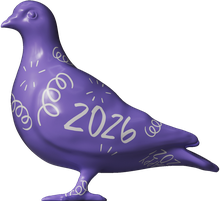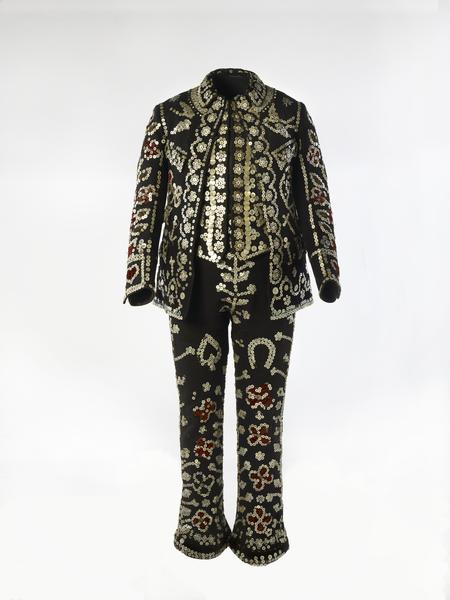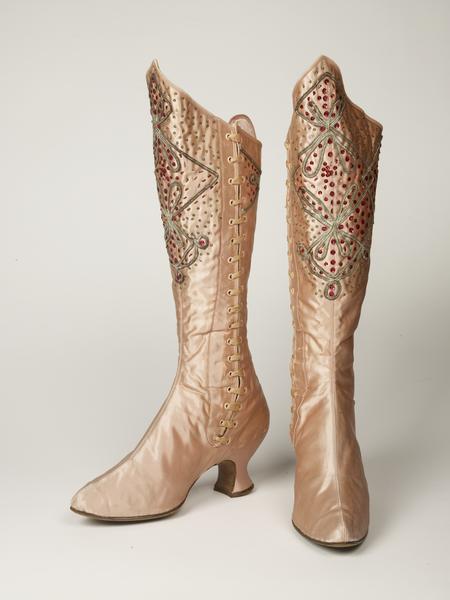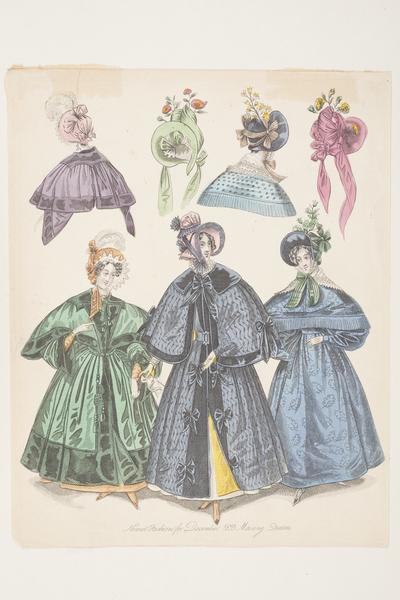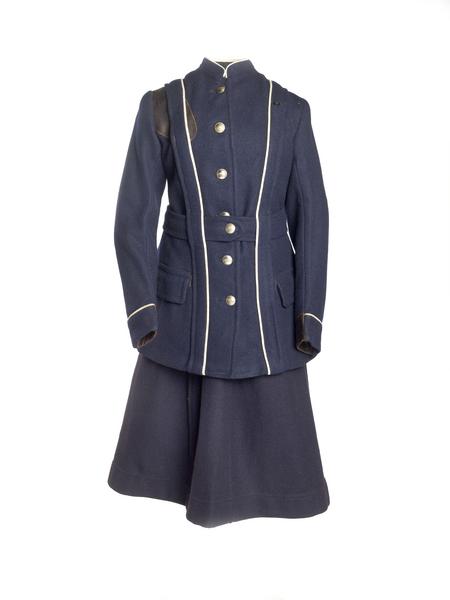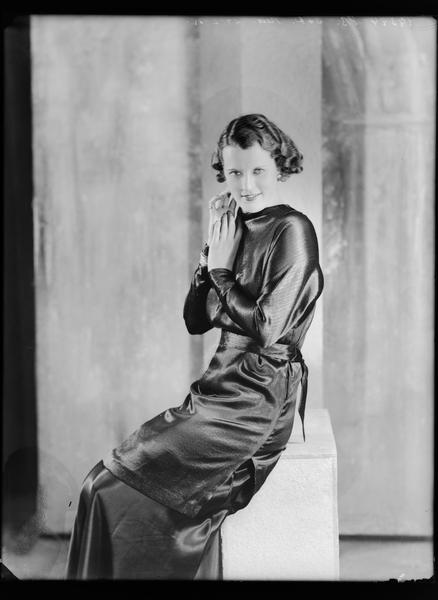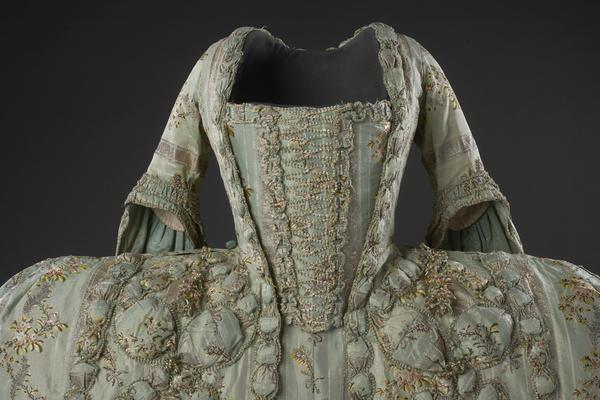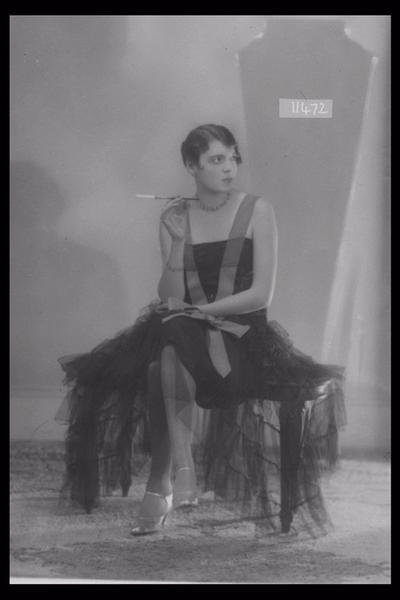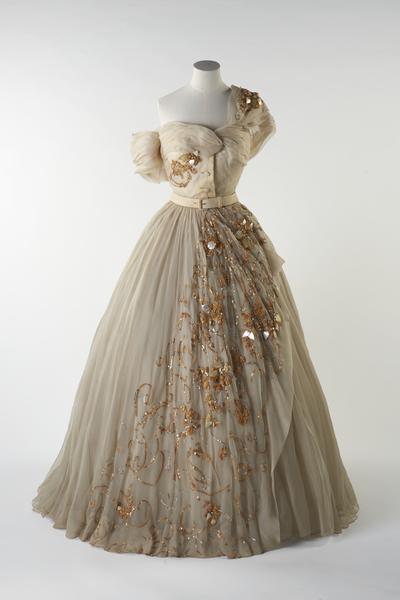Dress & textiles
From the studios of fashion designers like Hardy Amies and Vivienne Westwood, to everyday clothes from the capital’s high streets, London Museum’s dress and textile collection captures the London Look.
Londoners have long been known for their imaginative style and experimentation. The museum’s 26,000-strong fashion collection reflects London’s history as a centre for the production, design and consumption of clothes and textiles. The collection contains everything from the everyday to the extraordinary, showcasing the work and lives of Londoners from the Tudor period to the present day, and their relationship with the rest of the world. Initially, the museum focused on collecting ‘historic’ clothes, except during the two world wars, when efforts were made to acquire current garments. Since the 1960s, there has been an increasing focus on contemporary collecting and making the collection more representative of London’s diverse communities.
Garments made before the 19th century mostly reflect the lifestyle of the wealthy, while objects from the more recent period document a broader spectrum of society. Homemade clothes sit alongside those created in the studios of London couturiers, elaborate gowns put on for grand occasions are as important as outfits worn every day.
And, as with most of our collections, the work continues.
“Costume is interesting because it is splendid, ridiculous, useful, pompous, dignified, sombre, gay, fantastic – because, in short, it is human”
Mortimer Wheeler, Keeper and Secretary of London Museum, 1933
London’s famous designers and fashion streets
At the upper end of the fashion scale are the creations of London-based couture houses and designers, such as Grace Wales Bonner, Katharine Hamnett, Barbara Hulanicki, Lucile (Lucy, Lady Duff-Gordon), Mary Quant, Raemonde and Dora Rahvis, Zandra Rhodes and Vivienne Westwood. The collection also includes many garments made by ready-to-wear manufacturers and dressmakers. Menswear makes up a fifth of the collection, which includes creations of London’s tailors in and around Savile Row and other areas. London’s retail trade is represented through clothes made and sold in department stores, luxury and high-street retailers, and the boutiques on King’s Road, Carnaby Street and elsewhere.
Fashion across time and class
The collection contains individual pieces and sometimes small wardrobes from well-known Londoners, such as a knitted undergarment possibly worn by King Charles I, gowns and accessories belonging to Queen Victoria, Hardy Amies’ creations for Diana, Lady Delamere as well as the fabulous outfits of Soho dandy Sebastian Horsley and the architectural consultant Francis Golding. Equally important is the preservation of the clothes and stories of common people, including a wedding dress worn by five brides during the Great Depression and Second World War.
Migration and London’s fashion industry
The Dress & Textile collection highlights the contribution of migrants to London’s fashion history. We have particularly strong items related to the Jewish community. The skills of the Huguenot silk weavers and merchants living and working in Spitalfields are preserved in extraordinary garments. The capital’s shoemaking trade can be traced via King George IV’s glittering slippers over sparkly-heeled creations of Sicily-born Ignazio Pluchino and gold mock snakeskin men’s ankle boots made by Johnsons of Kensington Market, to the creations of luxury shoe band Gina, founded by Mehmet Kurdash.
Costumes and theatre
Costume made for the stage and screen form another large part of our collection, including, most famously, one of the tutus worn by Anna Pavlova for The Dying Swan ballet. Other highlights are the clown suit worn by Joseph Grimaldi, the corset of the ‘flying dancer’ Azella, “eccentric dancer” Kitty Lord’s beautiful boots, Gertie Millar’s Lucile gown, Alwin Stardust’s black satin jumpsuit, and costumes worn by Dot Cotton (June Brown) in the iconic EastEnders.
Protest fashion and banners
While a majority of the Dress & Textile holdings consists of clothes and accessories, we also have an important collection of banners used by protesters – from Suffragettes to campaigners for Occupy London. The colourful tunics designed and made by The Kindred of The Kibbo Kift, a movement whose members advocated for world peace are also represented.

An 1815 coloured print showing of a woman sitting and four bonnets that were fashionable at the time.
Accessories, fashion plates and magazines
Objects from other collections, such as make-up, hair accessories and jewellery help to illustrate how entire outfits would have been put together. Brochures, catalogues and magazines document how clothes were promoted. Fashion plates and photographs, especially the more than 3,000 advertising images taken at the Bassano Studio, show idealised and ‘real’ versions of garments, while tools and production equipment support telling the story of London as a centre of manufacturing.
More in our collections
-

Ephemera, manuscripts, rare books & maps
From 16th-century maps to 21st-century posters, this collection offers a fascinating snapshot of London life
-

Art & photography
Spanning over 500 years, this is a visual encyclopaedia of London from medieval altarpieces to contemporary digital art
-

Historic collections (prehistory–1700s)
Find out more about prehistoric tools, Roman pottery and Tudor treasures like the world-famous Cheapside Hoard
-

Modern collections (1700s–present)
London’s socio-cultural and economic history from the 1700s, including the world’s largest Suffragette collection

